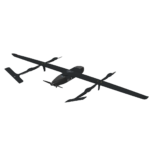
Lockheed Martin [LMT] will be integrating Magnetic Anomaly Detection-Extended Role (MAD-XR) systems on six Navy MH-60R helicopters as part of a new subcontract announced with CAE. The integration will give the MH-60R the ability to detect submarines and could be used for navigation in a GPS-denied environment, CAE told Defense Daily. The integration will be completed by Lockheed Martin under phase one of the contract by 2023. “Over the past several years we have conducted several trials with the U.S.…













